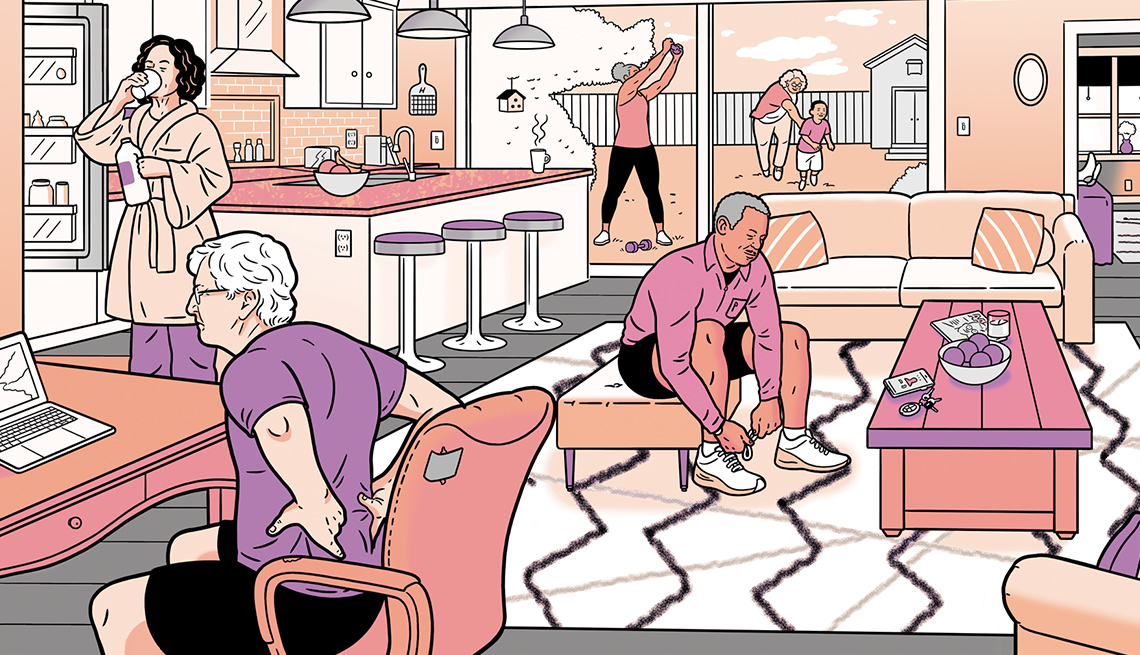
10 surprising causes of back pain
- Select a language for the TTS:
- UK English Female
- UK English Male
- US English Female
- US English Male
- Australian Female
- Australian Male
- Language selected: (auto detect) - EN
Play all audios:

If an aching back is starting to feel more like a regular thing — and less like something you randomly pulled at the gym — well, you’re not alone. About 6 million older adults in the U.S.
live with chronic lower back pain. In a 2019 survey by the National Center for Health Statistics, almost 46 percent of adults 65 and older said they experienced back pain in the past three
months. “As we get older, we start to lose fluid in our discs,” explains Gbolahan Okubadejo, M.D., an orthopedic spine surgeon with the Institute for Comprehensive Spine Care. As we lose
fluid, the discs tend to collapse and “we get stiffer and the risk of injury becomes greater,” he says. From there, plenty of lifestyle habits raise your risk. Some of these — hoisting your
grandkid or overdoing the gardening — are obvious, but some aren’t. Here are 10 surprising culprits that may play a role in the pain in your back. Kyle Hilton 1. YOU AREN’T DRINKING ENOUGH
MILK It’s not the milk per se, but the vitamin D it comes with; some studies have found that those with the most severe back pain had the lowest levels of vitamin D. The vitamin’s effect on
bone health could help explain the connection. Research in the journal _Menopause_ found that among postmenopausal women considering spine surgery, those with severe vitamin D deficiency had
more severe disc degeneration and back pain. Stronger bones can help protect against back pain and other disabling issues. Consult your physician about your vitamin D levels, says A.Nick
Shamie , M.D., professor and chief of spine surgery at the David Geffen School of Medicine at UCLA. Kyle Hilton 2. YOUR CORE IS WEAK The muscles in your midsection make up the “core,” says
physical therapist Karena Wu of ActiveCare Physical Therapy in New York City. A weak core can mean chronic back pain. To help build strength, sit or stand straight, imagining that there’s a
string attached to the top of your head, pulling you upward. Now tighten your abdominal muscles, trying not to move your pelvis, ribs or shoulders. Hold that position as long as you’re
comfortable. Kyle Hilton 3. YOU HAVE A NEW GRANDCHILD They’re delightful — and heavier than they look. If it’s been a while since you lowered an infant into a crib or picked a toddler in
mid-tantrum off the floor, you might be feeling it in your lower back. When lifting a baby, widen your base of support by spreading your feet a little apart and bringing your center closer
to the ground. Be sure to hold small children close to you when you move them from the floor to crib or from the ground to a car seat, says Matthew Minard, a physical therapist with Atrium
Health in Charlotte, North Carolina. “Imagine there’s a circle around your feet and stay within that zone,” he says. 4. YOUR BEDROOM ISN’T DARK ENOUGH Even during sleep, your body can
recognize when there’s too much light in your bedroom. Your heart rate increases, and your quality of sleep suffers. And there’s a clear association between poor sleep and back pain. Sleep
helps our muscles to relax and get rid of lactic acid buildup, Shamie says. Plus, sleep deprivation heightens your sensitivity to pain. Rest keeps discs in good condition. The jelly-like
core of a normal, healthy disc is 80 percent water, Shamie says. When you lie down to rest, your discs can refill for the day ahead. This gets more important as we get older and our discs
become drier. To fight the light, get blackout shades and ban digital devices from the bedroom.
